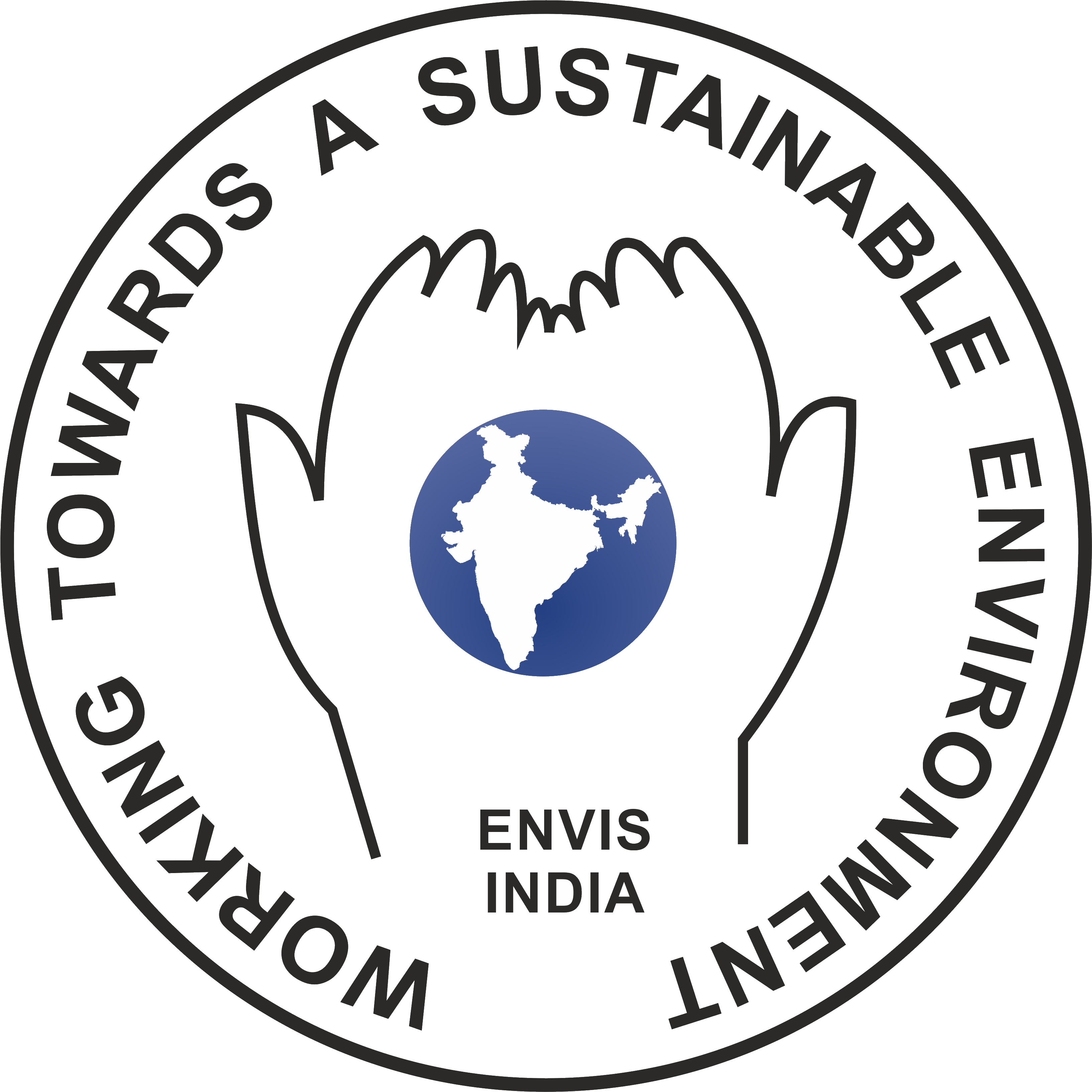Eco-restoration for people, nature, and climate of a spiritual campus- Satyaloka, Andhra PradeshCite
T V Ramachandra, Bharath Setturu, Vinay
ENVIS[RP], Environmental Information System, Energy and Wetlands
Research Group,
Centre for Ecological Sciences, Indian Institute of Science -
560012
envis.ces@iisc.ac.in
tvr@iisc.ac.in Phone:
080 22933099/22933503
1.0 Introduction
Eco-restoration entails the re-establishment of ecological status with ecological functions to sustain the renewability of natural resources (water, food, etc.). Planting native species community in the degraded landscape would help in restoring the ecological processes. The resultant vegetation demonstrating aesthetic and dynamic characteristics of the natural communities, will pave way to the sustainable development with the interplay of ecology, sociology, economics, and culture.
The natural recruitment and survival, functioning of food webs, system-wide nutrient conservation via relationships among plants, animals, and the detrivore community will lead to the persistence of species. The environmental, social, and economic aspects of a landscape could be achieved with innovative approaches in designing and implementing location-specific appropriate restoration technologies. Holistic approaches of linking ecological processes with social processes through eco-restoration involving community participation would ensure sustainable livelihood with the development of local communities.
Knowledge of nature's ecological diversity and the specific benefits of each species to human society is essential for selecting location-specific native species. Hence the selection of species could be made through indigenous knowledge with the involvement of local communities. Ecosystem services of rejuvenated landscape include retention of water, improvements in the hydrologic regime, air and water purification, detoxification and decomposition of wastes, regulation of local climate, regeneration of soil fertility, and pollination of crops.
The science of ecological restoration, also known as restoration ecology, includes diverse fields such as conservation biology, hydrology, landscape ecology, wetland management, rehabilitation of resource-extracted lands, human ecology, and adaptive ecosystem management. Ecological restoration integrates scientific, social, cultural, aesthetic, and spiritual ideas and practices. Thus, the practice of ecological restoration holds the inherent potential to reconnect humans with nature in a spiritual-ethical-moral sense.
Improvements in the landscape condition would aid in regaining biotic and abiotic resources to sustain the ecosystem structure with the ecological processes and functions. The ecosystem with the improved ecological status would demonstrate resilience to normal ranges of environmental stress and disturbance and interact with the neighbouring ecosystems in terms of biotic and abiotic flows and social and economic interactions. The benefits of eco-restoration with location-specific native species are (i) improvements in the micro-climatic conditions with the relatively lowered temperature in the landscape and enhancement of moisture condition, (ii) diverse vegetation would enhance the soil carbon and nutrients supporting diverse microbiota, (iii) soil would have lower bulk density (with the enhanced organic content, (iv) soil will be porous or permeable allowing water infiltration, which enhances the water retention capability of the landscape, (v) improvements in sub-surface water flows with the availability of water during all seasons and low rainfall period, (vi) supports diverse biotic elements (birds, butterflies, etc), enhancing the spiritual potential of the region, (vii) improvements in the landscape structure with diverse vegetation land cover, would support diverse pollinators abundantly which will improve the pollination process in the neighbourhood leading to the higher crop yield and improvements in the socio-economic status in the neighbourhood.
Mini forest at Indian Institute of Science: The success model of restoration of degraded landscape with the improvements in ecology and hydrologic regime. Details are available at: http://wgbis.ces.iisc.ac.in/energy/water/paper/ETR110/index.html
The mini forest of native species (of Karnataka part of the central Western Ghats) in a degraded landscape at the Indian Institute of Science campus was implemented three decades ago. This exercise also helped in evaluating the performance of native plants in the Deccan plateau region - Bangalore. A degraded landscape beset with scrub vegetation and infested with invasive weed (Parthenium) was chosen for planting tree saplings from the forests of the central Western Ghats. Saplings (480 no's.) belonging to forty nine species were planted along with a few saplings already existing on the plot with a spacing of 3 x 3 m. Now the landscape is transformed into a lush green forest, and the endeavor presented an opportunity to study the adaptations capability of plant species in the degraded landscape. The Western Ghats species and vegetation native to scrub vegetation are growing in perfect harmony, with improved humidity, temperature, and soil conditions. The mini forest trees exhibited normal robust growth, flowered, and set fruit evident from the growth of tree species such as Mitragyna parvifolia (Roxb.) Korth., Chukrasia tabularis A. Juss., Duabanga grandiflora (Roxb. ex DC.) Walp., Garcinia indica (Thouars) Choisy, Holigarna grahamii (Wight) Kurz, Lophopetalum wightianum Arn. and Syzygium laetum (Buch.-Ham.) Gandhi.
The landscape is now endowed with the rich micro and macro-fauna, from insects, frogs, snakes to birds and smaller mammals like the most elusive Slender Loris. Smaller plants such as mosses, algae, fungi, ferns, herbaceous plants, and climbers have grown well, adapting to the change. Improvements in the landscape's environmental, ecological and hydrological conditions are evident from the advancements in the groundwater table and rich biodiversity. The water table at this location is now 3 to 3.5 m compared to the earlier depth of 60-70 m. Other ecological benefits that have resulted from creating the mini forest are (i) improved microclimate (temperature is at least 2o C lower than other parts of 178 hectares campus) and reduced SO4 and Suspended Particulate Matter in the atmosphere which was emitted by the vehicles; (ii) carbon sequestration and reduction in air pollution - reduced atmospheric co2 ; (iii) reduced surface water runoff; infiltration of rainwater and recharging of groundwater resources; (iv) eradication of invasive plant species; (v) supports diverse fauna (4 families of slender loris, a wide variety of reptiles, butterflies, etc.); (vi) mitigation of temperature and urban heat islands; (vii) enhanced the aesthetic value (feel of rain forest in Bangalore); (viii) good experimental plot with diverse microhabitats; and (ix) enhanced the recreation and has become campus visitor's favourite spot. Realising the ecological, hydrological, and social benefits, this model of eco-restoration has been replicated in various educational institutions in Karnataka and in vacant plots by the environmentally conscious citizens.


 Sahyadri ENews Issues: I - LXXVIII
Sahyadri ENews Issues: I - LXXVIII
